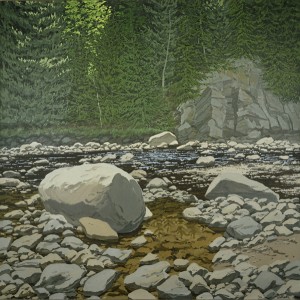 The Kemper Museum of Contemporary Art in Kansas City, Missouri is currently exhibiting “Companion Circles: Artist Circles from the Permanent Collection.” The exhibit examines the relationships between artists from their permanent collection including such notables as Georgia O’Keefe, Alfred Stiegletz, and William De Kooning. Mixing painting with photography, “Companion Circles” describes the relationships between the artists in both their personal lives and artistic expressions.
The Kemper Museum of Contemporary Art in Kansas City, Missouri is currently exhibiting “Companion Circles: Artist Circles from the Permanent Collection.” The exhibit examines the relationships between artists from their permanent collection including such notables as Georgia O’Keefe, Alfred Stiegletz, and William De Kooning. Mixing painting with photography, “Companion Circles” describes the relationships between the artists in both their personal lives and artistic expressions.
Jules Olitski, David Smith, and Kenneth Noland were all colleagues at Bennington College. These artists continue to meet to share and critique each other’s work. I was particularly struck with the similarities between Olitski’s “Bathsheba Reverie Yellow” and Noland’s “Mysteries: Red Light.” (Click through to see images). Both paintings have a focus on curving forms and color gradiations, though in effect they are entirely different. It was interesting to observe how both painters shared certain elements while keeping their own unique artistic expressions.
Another set of images I found quite compelling were both large-scale landscapes with simple color pallets: Neil Welliver‘s “Lower Duck Trap” (pictured) and Alex Katz‘s “Coleman Pond II.” One reason I was interested in this duo is that “Lower Duck Trap” has been on display at the Kemper for quite some time now, in varying locations. It was intriguing to see this painting grouped with another similar one. Katz and Welliver were part of a group of New York Modernists who began to explore the Maine coast during the 1950s. Both paintings focus on how water interacts with the land, one in a river and the other on the ocean’s shore, though Welliver’s is a day scene while Katz’s is an evening scene focusing on light and shadow.
Companion pieces will be on display at the Kemper Museum until July 8, 2012.
